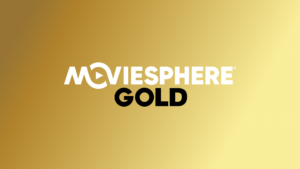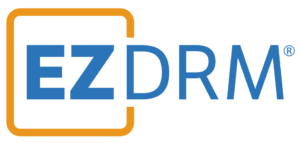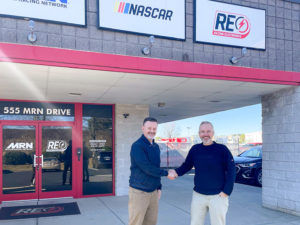Original Blog By T Shobhana, VP and Head, Global Marketing & Communications, Prime Focus Technologies 07 Dec 2017
Original available here: http://ow.ly/4g3c30hIdE8
When it comes to OTT programming, content is king—no matter the source or the delivery. Because of this, OTT has the potential to become a significant part of the content monetization strategy for the Media and Entertainment (M&E) industry.
When it comes to OTT programming, content is king—no matter the source or the delivery - T Shobhana, Prime Focus Technologies Share on X
To fully delve into this media phenomenon, it is important to understand exactly what OTT is, how it supports content monetization, what the future holds for OTT programming and how solutions such as those from Prime Focus Technologies are driving innovation.
WHAT IS OTT?
According to the Canadian Radio-Television and Telecommunications Commission, “Internet access to programming independent of a facility or network dedicated to its delivery (via, for example, cable or satellite) is the defining feature of what have been termed ‘over-the-top’ services.”
The most common examples of OTT programming are Netflix and YouTube, but smaller services including Amazon, Hulu, HBO Now and CBS All-Access are all quickly growing in popularity. One driver is niche programming that is taking aim at super fans who are passionate about their interest—whether it be sports, cartoons, cooking or even Brit-coms. High-speed internet that can deliver outstanding video quality, coupled with viewers’ desire to watch whatever, whenever and from wherever, on the device of their choice, has further pushed OTT programming and viewing to the mainstream. More than 450 scripted TV series are currently available via OTT programming.
CONTENT MONETIZATION
For the owners of media assets, content monetization can be built on three layers. First, they can conventionally publish on a linear platform (television, movie theater, etc.) to capture short-tail revenue for up to several weeks, followed by physical media (such as DVD/Blu-Ray) with a low distribution cost that generally ends within a few years. Most media industry executives predict that clients will not use OTT as an outright replacement for traditional TV subscriptions; instead, most plan to just cut back on the number of pay subscriptions and supplement viewing with OTT offerings, and almost a fifth don’t plan to cut back at all.
Most media industry executives predict that clients will not use OTT as an outright replacement for traditional TV subscriptions; instead, most plan to just cut back on the number of pay subscriptions- T Shobhana, Prime Focus Technologies Share on X
The second layer is publishing OTT, creating a long-tail cycle using contextual ads. In fact, many viewers said online ads are “particularly helpful” in introducing them to shows coming out on networks they do not regularly watch. Publishing nonlinearly incurs almost no incremental cost, the delivery cost is minimal, and the revenue potential can continue indefinitely.
Third, they can further develop each asset for user engagement commerce. OTT programming offers various options ranging from social media engagement to second screen companion applications that sync with the first screen. For example, almost half of viewers who miss the premiere of an episodic program they find interesting look for the premiere episode later on-demand or on a video website. Every option varies in its effectiveness as a potential for commerce and to increase user engagement levels. Assets can be further developed through analytics captured across these platforms.
OTT DISTRIBUTION CHALLENGES
While OTT publishing offers substantial business benefits, it also comes with a new set of challenges. For example, each OTT platform, such as YouTube, iTunes, HOOQ, or Amazon Prime has its own set of technical and quality specifications that need to be met. This involves several steps for each publishing channel, for every piece of content, including metadata creation, subtitling, compliance editing, QC and transcoding.
In a related example, also note that digital syndication to platforms like YouTube, Dailymotion, Go90, Facebook, and Pluto.tv also comes with its own set of requirements.
Thus, the process of publishing content to these platforms can be extremely cumbersome and expensive for content owners. To orchestrate all these tasks efficiently and effectively, companies must consider Media Asset Management (MAM) systems that automate the content supply chain as a critical support function. In particular, cloud-based MAM can play an instrumental role in seamless digital packaging and delivery—from content ingest through publication. This is because the process of creating the digital packages—transcoding them into multiple formats and delivering them to the target OTT platforms—can all be automated, saving substantial costs and time. The best vendors to consider provide support for all OTT-related services, have ready-to-deploy presets for all the major publishing platforms and can provide their certifications as approved and/or preferred vendors and partners for all the major industry players, including Netflix, iTunes and YouTube at a minimum. Choose a supplier with substantial experience and audited by the MPAA for best results.
MOVING FORWARD
A streamingmedia.com report anticipates that the number of companies involved in OTT delivery will grow and the proportion of businesses substantially invested in OTT technologies will more than double over the next 3 to 5 years. Interoperable Master Format (IMF) is also rapidly emerging as a preferred format for content exchange, and IMF ready packages now play an important role in the way content is managed, packaged and published across the OTT universe.
The number of companies involved in OTT delivery will grow & the proportion of businesses substantially invested in OTT technologies will more than double over the next 3 to 5 years- T Shobhana, Prime Focus Technologies Share on X
Going forward, a MAM system that provides technology to transform IMF Packages into deliverables for platforms like Netflix and iTunes will become essential for managing OTT operations. A MAM with an IMF Media player for playback over streaming proxy will also help achieve faster time-to-market, while easing content transfer loads and optimizing storage consumption across streaming locations. Because IMF also improves the ability of content owners to efficiently collaborate in content preparation and exchange content, IMF will continue to grow in use and must be a part of any ongoing OTT planning.
SOLUTIONS THAT DRIVE INNOVATION
The present-day content owner should not stop at OTT. Rather, they should be prepared for a switchover in the mindset of their audience; take deliberate efforts to plan and implement enterprise digitization; and lay the foundation for change. These steps can be more effectively implemented, and results achieved through automated MAM solutions such as hybrid cloud-enabled CLEAR Media Enterprise Resource Planning (ERP) software from Prime Focus Technologies.
Going forward, automated MAM systems will be the only way to handle increasing volumes of content while also managing and responding to the multiple format requirements of OTT distribution channels and avoiding delays and errors. Compared to traditional approaches, such automated systems will drastically reduce the total cost of operations for content owners, while increasing speed and flexibility when going to market. And in the media business, the faster, more accurate, and more flexible providers will win.
Going forward, automated MAM systems will be the only way to handle increasing volumes of content while also managing & responding to the multiple format requirements of OTT distribution channels- T Shobhana, Prime Focus Technologies Share on X









